Apple's successor to the iPhone X is a beautifully made smartphone with much of the same characteristics, including a 5.8-inch OLED screen, two storage choices, and Face ID. But many features set the iPhone XS apart from its predecessor, as well as the other 2018 lineup of iPhones, making it a worthy choice to upgrade to if you're in the market for a new mobile device.
A lot of rumors from over the last year ending up coming true, while some fell by the wayside. But overall, the specs for the iPhone XS are a decent step forward for Apple's lineup of smartphones. Plus, if you're into bigger phones, you always have the iPhone XS Max to fall back on, and if you can't afford either device, the iPhone XR is still a step forward from last year's iPhone 8 and 8 Plus.
But before you start thinking about the iPhone XS Max or XR, or any other smartphone for that matter, let's see what Apple's iPhone XS is all about.
Jump to a section: Important Dates | Storage Capacity | Price for Everything | Body | Basics | Display | Performance | Battery | Front Camera | Rear Camera | Audio | Sensors | Connectivity | Security | Software | Box Includes
Important Dates
The new iPhone XS was announced on Sept. 12, 2018, at Apple's fall event, alongside the iPhone XS Max and iPhone XR. The iPhone XS and XS Max will be available to preorder from Apple, carriers, and big-box stores on Sept. 15, 2018, and they will hit shelves for everyone on Sept. 21, 2018. The XR comes later in October.
- Release date: Sept. 21, 2018
- Preorder date: Sept. 15, 2018
- Announced: Sept. 12, 2018
Storage Capacity
Just like the iPhone X the previous year, the iPhone XS will come in either 64 GB or 256 GB storage capacities, but it also adds a 512 GB tier. And just like every other iPhone before it, there will be no support for expandable storage such as SD cards.
- Storage available: 64 GB, 256 GB, or 512 GB
- Expandable storage: no
Price for Everything
The new iPhone XS will start at $999 for the 64 GB model, while the 256 GB model will go for $1,149. The 512 GB model is a whopping $1,349. Needless to say, you'll have to pay tax as well. You'll also probably want AppleCare+, of which there are two types this time (regular and one with lost/theft coverage), and you'll need to consider carrier costs you'll pay later in addition to your regular bill, such as upgrade fees.
- Price: $999 (64 GB), $1,149 (256 GB), or $1,349 (512 GB) plus tax
- AppleCare+: $199 or $299 (optional)
For an iPhone XS at 256 GB, you're looking at at least $100 in tax you'll need to pay in addition to the $1,149 price tag. Then, there's AppleCare+ for $199 (unless you go all out for the lost/theft protection plan of $299). If you use the iPhone Upgrade Program, only tax and first month's payment is due right away.
For instance, when I purchased the iPhone X last year via the iPhone Upgrade Program, the iPhone itself was $1,149, but I also had AppleCare+ for $199. Also, the first month of the iPhone Upgrade Program was $56.16, and tax came out to $101.11, both which were due immediately while the rest was financed at zero percent. My carrier also hit me with a $30 upgrade fee later.
Body
Just like the iPhone X, the iPhone XS has a "surgical-grade" stainless steel metal frame with glass on both the front and rear of the device. The glass on the rear aids in wireless charging, which is necessary for Apple to make its yet-released AirPower wireless charging station fly off the shelves when the time comes. Aside from that, the XS comes in three color options: space gray, silver, and gold.
- Frame: stainless steel
- Finish: space gray, silver, gold
The whole design is free of mercury, arsenic, brominated flame retardant, PVC, and beryllium, and it includes stainless steel that's recyclable. It also has a low-carbon process. While that sounds well for the body, we won't mention anything about how Apple sources the materials needed to make an iPhone, nor how it goes about recycling them later.
Basics
The dimensions of the iPhone XS are the same as the iPhone X, so if you're upgrading from the X, the case you have will already work for the XS. As for dust and water protection, it has an "Ingress Protection" rating of 6 for debris, meaning it's entirely dustproof, and 8 for liquids, meaning it can be submerged in water up to 2 meters for up to 30 minutes. For the cellular connection, the big four providers will be supported, with tinier outfits like US Cellular and Cricket following suit soon after.
- Height: 5.65 inches
- Width: 2.79 inches
- Depth: 0.30 inches
- Weight: 6.24 ounces
- Dust/water resistance: IP68 under IEC standard 60529
- Supported carriers: AT&T, Sprint, T-Mobile, Verizon
When it comes to environmental requirements for operating, the iPhone XS works in normal conditions from freezing to the mid-nineties in the Fahrenheit scale. When powered down, it can also survive extreme temperatures from –4 degrees to up to 113 degrees.
- Operating temp: 32° to 95° F
- Nonoperating temp: -4° to 113° F
- Relative humidity: 5–95% noncondensing
- Operating altitude: up to 10,000 feet (though could be more)
Display
While its bigger brother has a 6.5-inch screen, the iPhone XS has the same size as last year's iPhone X, which is 5.8 inches. But it doesn't share the same screen resolution as the iPhone X; Instead, the XS has 2436 x 1125 pixels, with a pixel density of 458 pixels per inch.
Of course, just like last year's iPhone X, the XS has an OLED panel with a notch for the TrueDepth camera and speaker. The only iPhone released in 2018 to have an LCD panel is the iPhone XR, the cheaper 6.1-inch model of the three released.
The screen-to-body ratio is likely an excellent 81.1% while the aspect ratio is 19.5:9, a great ratio for watching widescreen movies. As for the rest of the details, its brightness can go from 2 to 625 nits, it has a refresh rate of 60 Hz for video but 120 Hz for touch-sensing, it has a million to one contrast ratio, and the color temperature could be 6,883 K just like the X was. Plus, it has an oleophobic coating that protects the display from fingerprints.
While rumors speculated that 3D Touch would be gone in these iPhone generations, the XS does indeed come equipped with 3D Touch in the display, which allows for pressure-sensitive gestures used to access Quick Actions for apps, peek at items and pop them into full view, make thin or thick lines when drawing based on how much pressure you apply, and more.
- Screen size: 5.8 inches
- Screen resolution: 2436 x 1125 pixels
- Pixel density: 458 ppi
- Screen type: OLED, Super Retina HD
- Notch: yes
- Screen-to-body ratio: 81.1 percent
- Aspect ratio: 19.5:9
- Minimum brightness: 2 nits
- Maximum brightness: 625 nits
- Refresh rate: 60 Hz (120 Hz for touch-sensing)
- Color temperature: 6,883 K
- 3D Touch: yes
Performance
Unlike its predecessor which only had 3 GB of RAM, the XS has one more gig for a total of 4 GB. The chip in the unit is Apple's A12 Bionic, which has a 64-bit architecture (the new standard for iPhones). Last year's A11 Bionic also had integrated M11 motion coprocessor that dealt with data from the accelerometer, gyroscope, and other related sensors, but we haven't seen anything about that this time, though we suspect it's built in. The Apple-designed 2.496 GHz CPU has six cores, and the GPU has four cores, and there's Apple's "next-generation Neural Engine" for machine learning.
- Memory: 4 GB RAM
- Processor: Apple A12 Bionic with 64-bit architecture
- Chip size: 7 nanometer
- Coprocessor: unknown
- CPU frequency: 2.496 GHz
- CPU cores: 6
- GPU: Apple-designed (unknown model)
- GPU cores: 4
Battery
With a decent 2,658 mAh rechargeable lithium-ion battery, you can expect about the same performance as the battery life of the iPhone X, even though the latter had a bigger 2,716 mAh one. That means maximums of roughly 20 hours for talk time, 12 for internet use, 14 for video playback, and 60 for audio playback.
The battery can be charged via the standard Lightning to USB cable with a computer or power adapter, as well as fast-charged using a Lightning to USB-C cable with an appropriate wall adapter. The latter will get you about 50% battery in about 30 minutes. Charging can also be done wirelessly with any Qi-certified charging pad, such as Apple's yet-to-be-released AirPower wireless charging station.
- Battery: rechargeable lithium-ion
- Capacity: 2,658 mAh, 3.81 volts (10.13 watt-hours)
Front Camera
Just like last year's iPhone X, the iPhone XS has a 7 MP TrueDepth camera system in the front at the top of the display, its primary purpose being for Face ID, Apple's facial recognition software that is the successor to the Touch ID fingerprint sensor.
It's capable of shooting in Portrait and Portrait Lighting mode, with what Apple calls "advanced bokeh" and "Depth Control," as well 1080p HD video recording. It's also used for Animoji and Memoji; has an ƒ/2.2 aperture, "Retina Flash" module (which turns the screen into one giant flash), backside illumination sensor, wide color capture for photos and Live Photos, and auto image stabilization; and supports Smart HDR, Burst mode, exposure control, and Timer mode.
It also can detect body, faces, winks, and tongues. Plus, for videos, you get cinematic video stabilization which aids in improving the video quality, as well as extended dynamic range for 30 fps video.
- Resolution: 7 MP
- Aperture: ƒ/2.2
- Zoom: no
- Flash: screen-based
- Image stabilization: software-based
- RAW support: no
- Object detection: bodies, faces, winks, tongues
Rear Camera
The rear 12 MP camera has two lenses, a wide-angle and telephoto, the former with an ƒ/1.8 aperture, the latter with an ƒ/2.4. Thanks to the telephoto lens, it supports two-times magnification for optical zoom, with digital zoom that goes up to ten times. Both lenses have optical image stabilization for more in-focus handheld shots, and there's a six-element lens for more accurate photos and a sapphire crystal lens cover for durability.
The flash is a "quad LED True Tone flash with Slow Sync" designed to correct the ambient lighting for more accurate flesh tones and to provide more uniformly lit backgrounds and foregrounds. And just like the front camera, you can shoot in Portrait and Portrait Lighting mode with advanced bokeh and "Depth Control" which lets you adjust depth in an image after the fact.
There's also the backside illumination sensor, wide color capture for photos and Live Photos, exposure control, body and face detection, Timer and Burst modes, Smart HDR with improved local tone mapping, auto image stabilization, and advanced red-eye detection.
The rear camera can shoot panoramas up to 63 MP in size, includes a hybrid infrared filter, uses noise reduction, and supports geotagging. There's also Live Photos with stabilization and "Focus Pixels," the latter of which is used for autofocus and manual focus (by tapping).
And while it can shoot RAW images, it can only do so with third-party apps, not the stock Camera app. Otherwise, you're looking at the standard PNG for screenshots and standard JPEG for photos, as well as Apple's newer High-Efficiency Image File Format.
- Resolution: 12 MP
- Aperture: ƒ/1.8 (wide-angle) and ƒ/2.4 (telephoto)
- Zoom: 2x optical, 10x digital
- Flash: Quad-LED True Tone flash with Slow Sync
- Image stabilization: optical, both lenses
- RAW support: yes
- Lens cover: sapphire crystal
- Object detection: bodies, faces
- Formats: HEIF, JPEG, RAW
As for video recording, you can shoot videos in either 720p, 1080p, or 4K resolution with a max frame rate of 60 frames per second (30 for 720p). When shooting in 720p or 1080p, you also get cinematic video stabilization which aids in improving the video quality. For slow-motion footage, you can shoot at 1080p in either 120 fps or 240 fps. And if you want to take a photo while filming, you can take an 8 MP image while on the 4K setting, though the resolution may be smaller on lower settings.
When filming, you can also choose between 2x optical zoom and up to 6x digital zoom. The Quad-LED True Tone flash also kicks in when you need it, though Slow Sync does not work for videos. Video can also make use of the optical image stabilization, body and face detection, and sapphire crystal lens cover, as well as noise reduction, geotagging, continuous autofocus, and zoom abilities when playing back footage. It also has stereo sound when recording.
Videos are shot in either H.264 format or H.265 (High-Efficiency Video Coding).
- Resolution: 720p, 1080p, and 4K
- Max frame rate: 30 fps for 720p, 60 fps for 1080p and 4K
- Slow motion: yes, 1080p at 120 or 240 fps
- Time-lapse: yes, with stabilization
- Photos: 8 MP stills while recording 4K
- Zoom: 2x optical, 6x digital
- Flash: Quad-LED True Tone flash
- Image stabilization: optical
- Lens cover: sapphire crystal
- Object detection: bodies, faces
- Audio: stereo sound
- Formats: H.264, H.65 (HEVC)
Audio
There's no headphone jack here, which is no surprise, and you don't get a Lightning to 3.5 mm headphone jack adapter this time. And there are stereo speakers in the front, which use the bottom firing speakers and speaker near the TrueDepth camera. According to Apple, the audio emits wider, for a fuller sound. There are also built-in microphones near both speakers, as well as one in the camera lens on the rear of the device.
According to Apple, the iPhone XS supports AAC-LC, HE-AAC, HE-AAC v2, Protected AAC, MP3, Linear PCM, Apple Lossless, FLAC, Dolby Digital (AC-3), Dolby Digital Plus (E-AC-3), and Audible (formats 2, 3, 4, Audible Enhanced Audio, AAX, and AAX+) formats.
- 3.5 mm headphone jack: no
- Stereo speakers: yes
- Mics: three total (on rear, front, and bottom)
- Max speaker volume: unknown
Sensors
The XS has all the standard sensors you'd expect from a smartphone these days.
In the US, assisted GPS is included for maps and navigation, among other things — a vital part in "Location Services" in iOS, which also uses Bluetooth, Wi-Fi, and cellular towers — while there's GLONASS, Galileo, and QZSS for Russia, Europe, and Japan, respectively.
The accelerometer senses the movement and tilt of your device; This helps to rotate your display orientation. There's also the three-axis gyroscope, which "measures the rate at which [the] device rotates around a spatial axis," according to Apple. Together, these two sensors determine when your device is going up/down, left/right, or forward/backward, as well as how it's rotating along its x, y, and z axes. These are necessary for a lot of games and especially augmented reality.
The built-in proximity sensor detects when objects are close to the screen, which is useful for shutting the display off with your ear against the built-in speaker for a call or when your iPhone is face down and doesn't need the screen to wake at all.
The magnetometer in the iPhone XS provides "measurements of the Earth's magnetic field relative to the device," according to Apple. You can get elevation data (like in the Compass app) and measure air pressure with the barometer. And the ambient light sensor detects how much light is around to adjust your screen brightness accordingly.
And in order to track your steps with the Health app, to keep you fit, it has a pedometer. It may not be as accurate as pedometers found on the Apple Watch or Fitbit watches, but it works fairly well.
- Sensors: aGPS, barometer, accelerometer, three-axis gyroscope, proximity sensor, magnetometer, barometer, digital compass, pedometer
Connectivity
Just like any other smartphone on the market, the iPhone XS has Wi-Fi and cellular support, and it includes Bluetooth 5.0 technology so you can connect wirelessly to car stereos, headsets, remote shutters, and other Bluetooth accessories.
A Near Field Communication chip reads data from electronic tags or real-world objects like toys, in-store signs, and store products in supported apps.
In addition, the iPhone XS also sports a dual-SIM card tray, meaning you can have two SIM cards in your XS at all times. Actually, one is a nano SIM while the second can be an eSIM. With two SIMs, you can have two cell phone numbers at once to keep your personal and work life separate, two name just one use-case.
- Wi-Fi: 802.11ac with 2 x 2 MIMO antenna
- Bluetooth: 5.0
- NFC: yes
- Cellular: dual Nano-SIM card tray, Gigabit-class LTE with 4x4 MIMO and LAA
- Port: Lightning
- Other: iBeacon microlocation, AirPlay, AirDrop
As for the wireless bands, there are two models, and both work with CDMA and GSM networks, and one that does not support CDMA networks such as Sprint or Verizon.
Model A1920
- FDD-LTE bands 1, 2, 3, 4, 5, 7, 8, 12, 13, 14, 17, 18, 19, 20, 25, 26, 29, 30, 32, 66, 71
- TD-LTE bands 34, 38, 39, 40, 41, 46
- CDMA EV-DO Rev. A (800, 1900 MHz)
- UMTS/HSPA+/DC-HSDPA (850, 900, 1700/2100, 1900, 2100 MHz)
- GSM/EDGE (850, 900, 1800, 1900 MHz)
Model A1921
- FDD-LTE bands 1, 2, 3, 4, 5, 7, 8, 12, 13, 14, 17, 18, 19, 20, 25, 26, 29, 30, 32, 66, 71
- TD-LTE bands 34, 38, 39, 40, 41, 46
- CDMA EV-DO Rev. A (800, 1900 MHz)
- UMTS/HSPA+/DC-HSDPA (850, 900, 1700/2100, 1900, 2100 MHz)
- GSM/EDGE (850, 900, 1800, 1900 MHz)
Security
Thanks to Apple's TrueDepth camera system, the XS uses Face ID for facial recognition instead of Touch ID, just like the iPhone X did, to unlock apps, services, and your device. There is a one in a million chance that someone could break into your iPhone — unless they are your twin, of course.
With Face ID, you can also use Apple Pay to make purchases online and in stores with connected cards or your Apple Pay Cash balance.
- Security: Face ID
It also comes with a USB restricted mode that prevents unwanted devices from connecting to the iPhone and stealing data, requiring you to use your passcode (not Face ID) to give access to a computer or other device. Learn more.
Software
Just like the other 2018 iPhone models, the XS comes with iOS 12 built in, which every iPhone model from the iPhone 5S on up supports. Given recent records for Apple's software support cycle, it's possible that the iPhone XS might make it all the way to support iOS 17 in 2023. If not, it will definitely max out at iOS 16 in 2022.
- Software: iOS 12 and higher
With iOS 12 as the default operating system, you'll get FaceTime video calling using either Wi-Fi or cellular, FaceTime audio, voice over LTE (VoLTE), and Wi-Fi calling. There's also, obviously, full Siri support.
And the device supports audio playback of AAC-LC, HE-AAC, HE-AAC v2, Protected AAC, MP3, Linear PCM, Apple Lossless, FLAC, Dolby Digital (AC-3), Dolby Digital Plus (E-AC-3), and Audible (formats 2, 3, 4, Audible Enhanced Audio, AAX, and AAX+) files. As for video playback, there's HEVC, H.264, MPEG-4 Part 2, and Motion JPEG, as well as High Dynamic Range with Dolby Vision and HDR10 content.
It also supports many languages for the system, the QuickType keyboard, Siri, dictation, dictionaries, and spell check — too many to list here. If you're living in the US, it's got everything you need, trust us.
Box Includes
If you like what you see so far for the specs, when it comes time to buy an iPhone XS, you'll get the usual headphones, cables, and power adapter, as well as documentation.
- iPhone XS
- EarPods with Lightning connector
- Lightning to USB cable
- USB power adapter
- Documentation
Just updated your iPhone? You'll find new features for Podcasts, News, Books, and TV, as well as important security improvements and fresh wallpapers. Find out what's new and changed on your iPhone with the iOS 17.5 update.
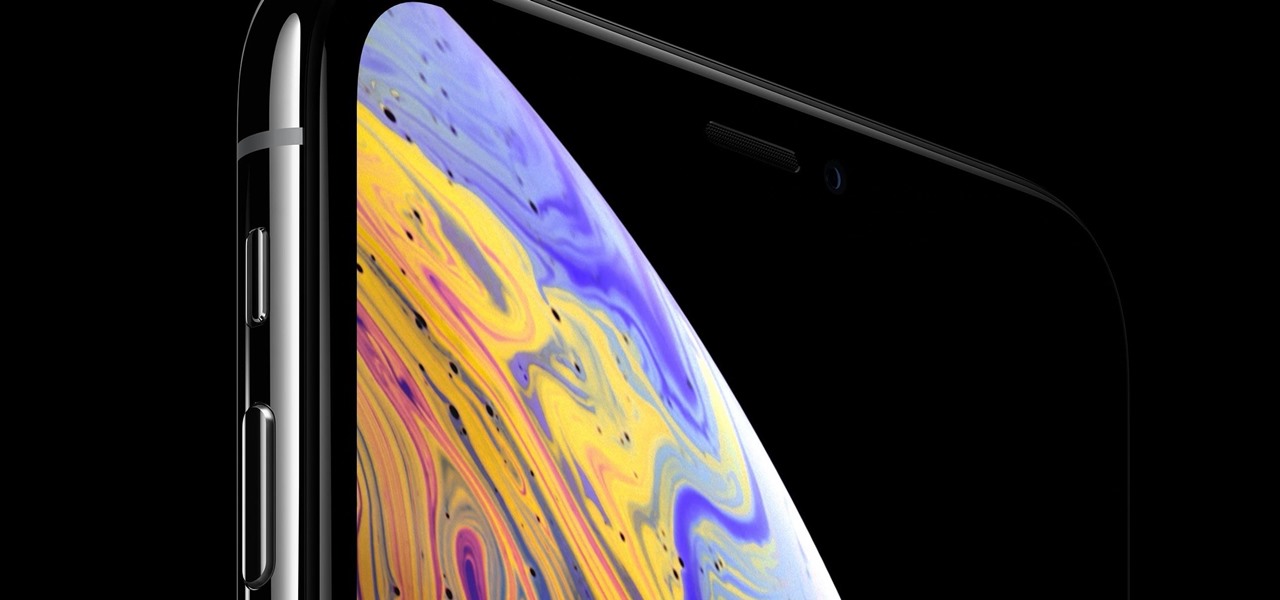


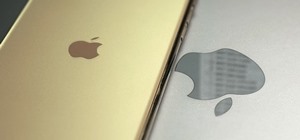





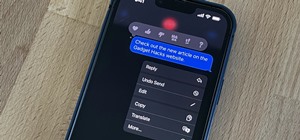

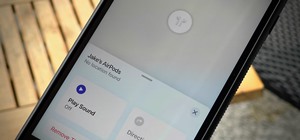




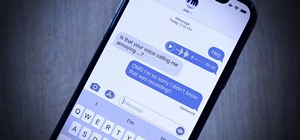

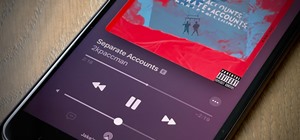
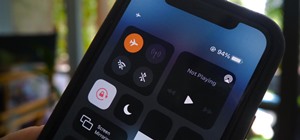
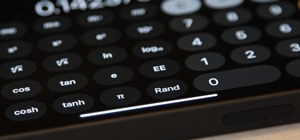

Be the First to Comment
Share Your Thoughts